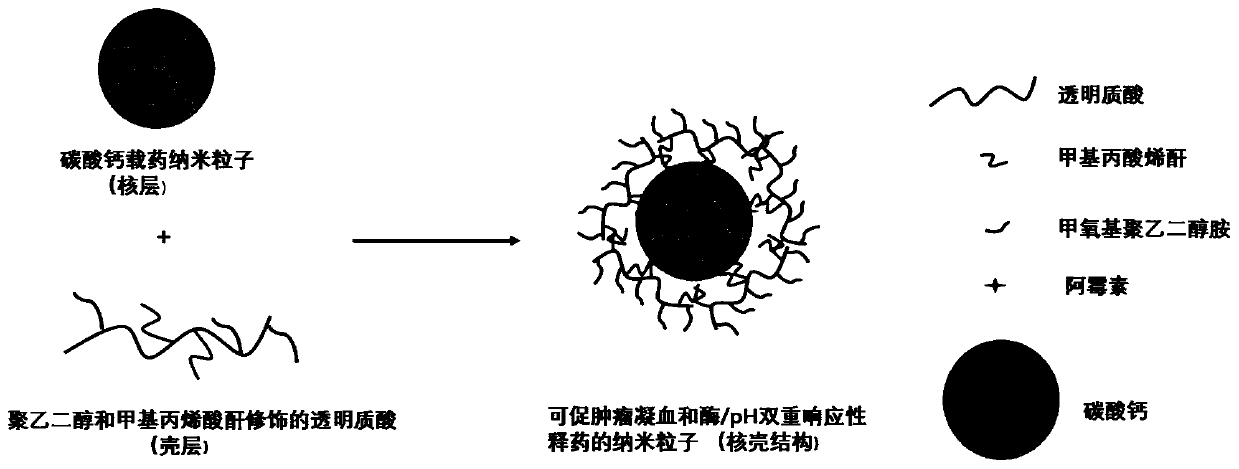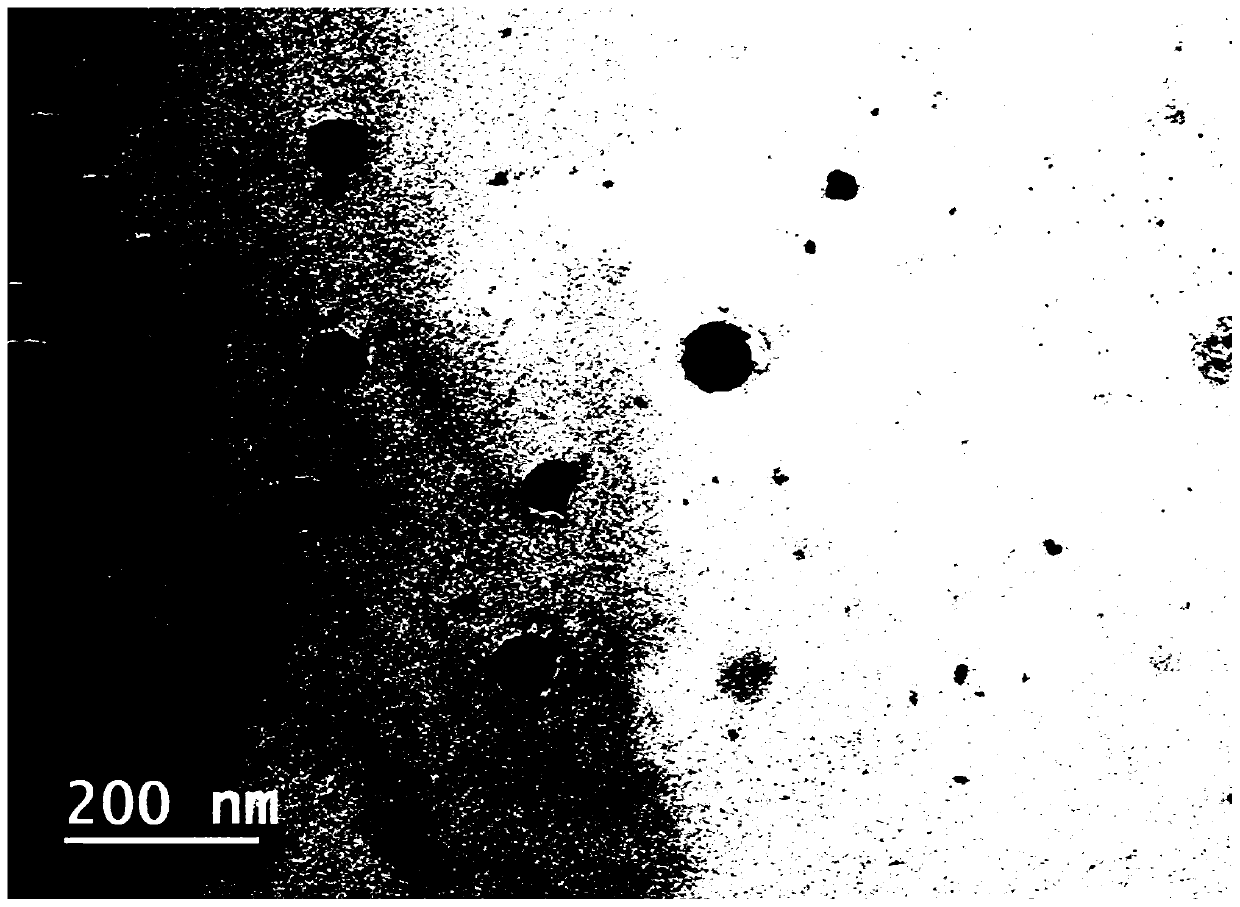Nano particle capable of promoting tumor clotting and enzyme/pH dual responsive drug release and preparation method and application thereof
A nanoparticle, responsive technology, applied in the field of biomedical materials and drug controlled release
- Summary
- Abstract
- Description
- Claims
- Application Information
AI Technical Summary
Problems solved by technology
Method used
Image
Examples
Embodiment 1
[0091] (1) Preparation of core layer calcium carbonate drug-loaded nanoparticles
[0092]① Dissolve 2.046g of surfactant dodecyl ammonium bromide (CTAB) in 5mL of co-surfactant n-butanol and 27mL of oil phase n-hexane, stir at a constant temperature of 40°C for 0.5h, and form an oil phase after complete dissolution. Then add 0.1mL of 2mol / L calcium chloride aqueous solution and 0.1mL of 2mol / L sodium carbonate aqueous solution to the oil phase (volume ratio of oil phase and water phase is 160:1), stir and react for 12h, centrifuge with n-hexane After washing with alkane and ethanol three times, calcium carbonate nanoparticles were obtained after drying. The X-ray diffractometer pattern of calcium carbonate nanoparticles is as follows figure 2 As shown, it can be proved that the prepared calcium carbonate belongs to the calcite type. Transmission electron microscopy of calcium carbonate nanoparticles as image 3 As shown in the figure, the results show that the spherical sh...
Embodiment 2
[0107] (1) Preparation of core layer calcium carbonate drug-loaded nanoparticles
[0108] ① Dissolve 2.046g of surfactant dodecyl ammonium bromide (CTAB) in 5mL of co-surfactant n-butanol and 27mL of oil phase n-hexane, stir at a constant temperature of 40°C for 0.5h, and form an oil phase after complete dissolution. Then add 0.5mL of 2mol / L calcium chloride aqueous solution and 0.5mL of 2mol / L sodium carbonate aqueous solution (the volume ratio of oil phase and water phase is 32:1) to the oil phase, stir and react for 12h, and use n-hexane after centrifugation. After washing with alkane and ethanol three times, calcium carbonate nanoparticles were obtained after drying. The TEM results of the calcium carbonate nanoparticles showed spherical shape with an average particle size of 300 nm and a potential of +8 mV.
[0109] ② Take 6 mg of calcium carbonate nanoparticles prepared in step ① and disperse it in 2 mL of deionized water, take 4 mg of topotecan hydrochloride (TPT) and ...
Embodiment 3
[0118] (1) Preparation of core layer calcium carbonate drug-loaded nanoparticles
[0119] ① Dissolve 2.046g of surfactant dodecyl ammonium bromide (CTAB) in 5mL of co-surfactant n-butanol and 27mL of oil phase n-hexane, stir at a constant temperature of 40°C for 0.5h, and form an oil phase after complete dissolution. Then add 0.05mL of 2mol / L calcium chloride aqueous solution and 0.05mL of 2mol / L sodium carbonate aqueous solution (the volume ratio of oil phase to water phase is 320:1) respectively into the oil phase, and stir for 12h. After washing with alkane and ethanol three times, calcium carbonate nanoparticles were obtained after drying. The transmission electron microscope results of calcium carbonate nanoparticles showed spherical shape with an average particle size of 50 nm and a potential of +5 mV.
[0120] ② Take 2 mg of calcium carbonate nanoparticles prepared in step ① and disperse them in 2 mL of deionized water, take 4 mg of paclitaxel (PTX) and dissolve it in ...
PUM
| Property | Measurement | Unit |
|---|---|---|
| Particle size | aaaaa | aaaaa |
| Particle size | aaaaa | aaaaa |
| Particle size | aaaaa | aaaaa |
Abstract
Description
Claims
Application Information
 Login to View More
Login to View More - R&D
- Intellectual Property
- Life Sciences
- Materials
- Tech Scout
- Unparalleled Data Quality
- Higher Quality Content
- 60% Fewer Hallucinations
Browse by: Latest US Patents, China's latest patents, Technical Efficacy Thesaurus, Application Domain, Technology Topic, Popular Technical Reports.
© 2025 PatSnap. All rights reserved.Legal|Privacy policy|Modern Slavery Act Transparency Statement|Sitemap|About US| Contact US: help@patsnap.com



